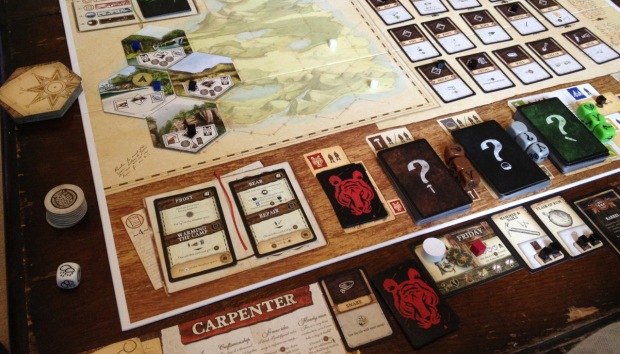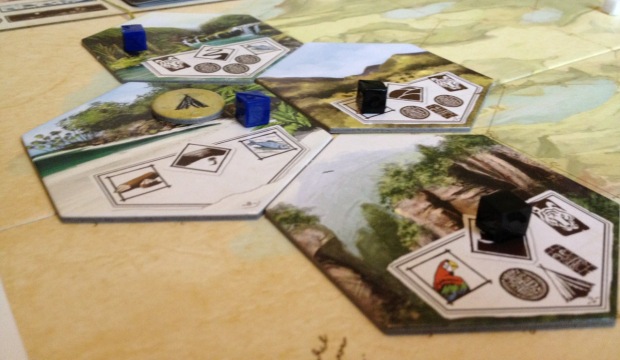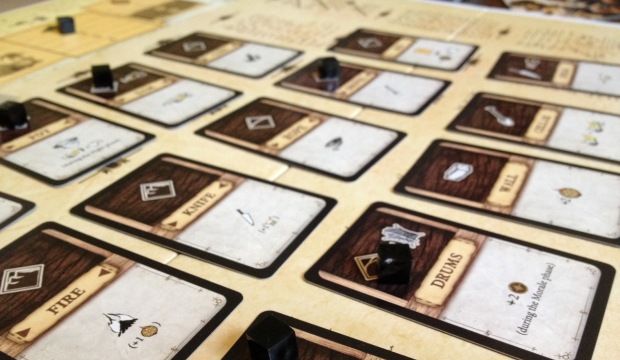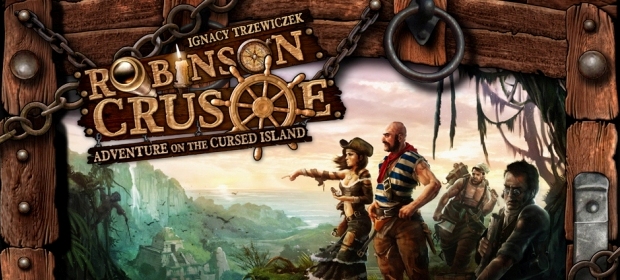I was struggling to describe co-op survival game Robinson Crusoe: Adventure on the Cursed Island. To go through all of the features would take more words than I have here, and make for a dull review in any case. But I was playing the rather excellent Don’t Starve the other day, and I noticed several parallels.
First off: the central concept is the same. You and up to three other players have been stranded on an island, where you must find food and wood to survive the nights. You can also build items and shelter to help you stay alive. A night without food can cause serious damage to your fragile characters, who only have a limited number of health points.

All of this is accomplished by using action tokens, of which each player has two. These allow you to explore, forage, hunt and build. Up to two can be placed on a given action, which will guarantee success, while spreading yourself thinly and using only one token requires a dice roll to resolve. The system rarely feels unfair; dice rolls normally succeed, but may cause a wound to be taken or an event card to be shuffled into the deck.
These event cards add some randomisation to the game. At the start of each day the lead player takes one from the deck at the top of the board and enacts the top action on it, normally some form of penalty. Then it is placed in the active events at the bottom of the board where the players get two turns to resolve it, using action tokens. Resolving the card provides a bonus, while failing to do so causes a further penalty.
Survival isn’t the aim of the game, though. There are six scenario cards, which get progressively harder. Each slightly twists the starting conditions, sets the amount of turns and provides a goal. The first scenario for example, “Castaways”, sees you working together to build a fire out of fifteen wood by the twelfth turn, with minimal starting changes but with a special item that can be built to boost wood gathering.

There is also a weather phase, with up to three dice rolled depending on which the scenario card stipulates. These encompass snow, rain and animal attacks (for some reason), and can cost food, wood or even wounds depending on the level of your roof and walls.
It all serves to create a believable world that you and your friends have to struggle against while you attempt to achieve your goal. Other randomised elements come in, such as finding items and treasure as you explore or running out of a resource on a particular island tile add to this – the game is alive and it wants you to fail.
A word of warning though: Robinson Crusoe is not for the faint hearted. The first game I played took over an hour to set up, and then two to play. Mainly this was due to some poor instructions in the manual – particularly with the naming of certain areas of the boards – but many of the cards look very similar, in the case of event cards only differentiated by a tiny circle less than 1cm across. In fairness the variety of cards and closeness in design are needed for the game to work, but I can’t help but feel it could all be explained better.

It’s also incredibly frustrating when you lose on the final turn. While losing to other players at least provides someone with the satisfaction of winning, this is like dying on the final level in a video game without any checkpoints.
VERDICT: Robinson Crusoe: Adventure on the Cursed Island does a fantastic job of creating a living world out of only dice rolls and cardboard tokens. When it all works, it can be great fun to play, assigning resources and making life or death decisions. However it really does require dedication to see its full potential. If you have the patience to sit and learn all of the rules and then role-play though it you’ll have a blast, but if you don’t then maybe this isn’t the game for you.





